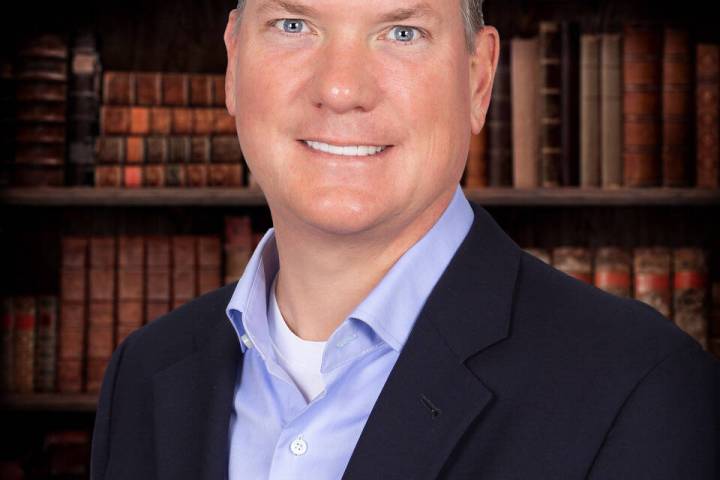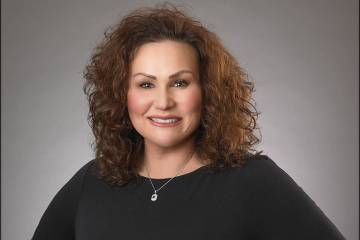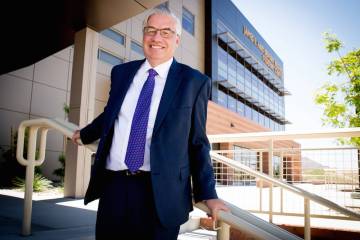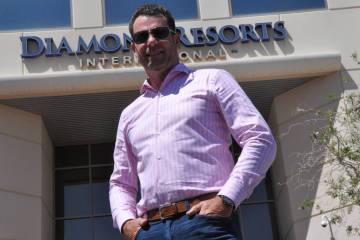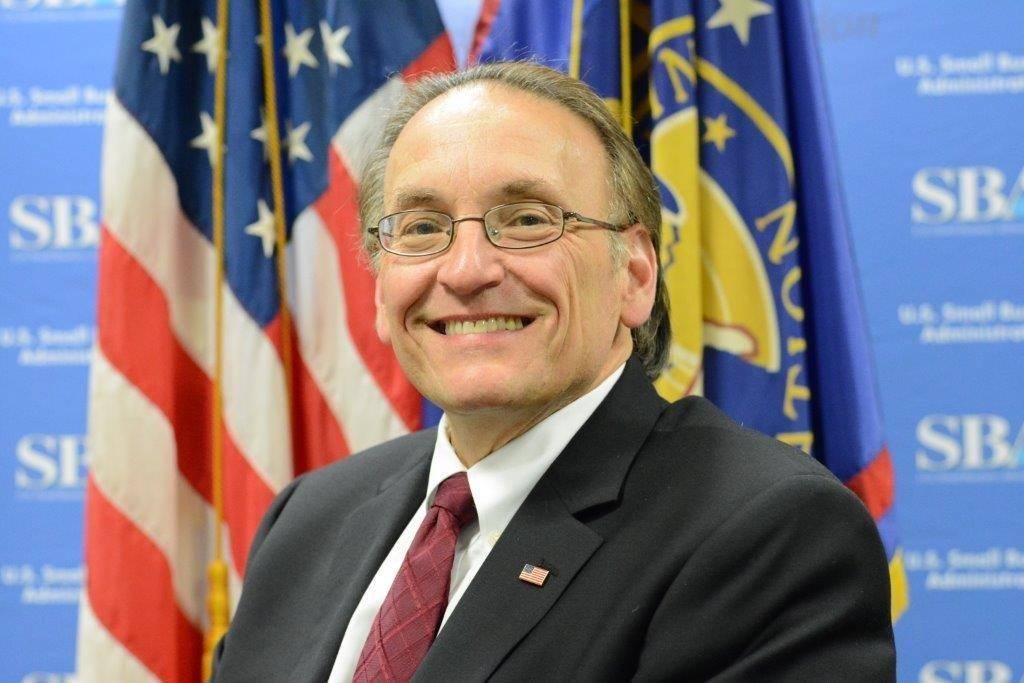
Michael Vallante is the new administer of the U.S. Small Business Administration region IX, covering Nevada, California, Arizona, Hawaii and Guam. He is a former small business owner, chief operating officer of the California Republican Party from 2003 to 2007, and formerly the chief of staff to the co-chairman of the Republican National Committee.
Q: You started in your new position April 17. How have the first five weeks been?
A: Eye-opening. It has really been informative for me, in the sense of the many programs the SBA has available and the amount of help that can be provided.
Q: Has your former small business (consulting with businesses and nonprofits nationwide) benefited you in your new role?
A: I think it has, because in that position I worked with people around the country, not just in my home state or my region. So I was able to see — tactically and strategically — how some things work in some places, but not others. The approach has to be different.
My dad was a small business owner. He had a small jewelry shop in Providence, Rhode Island. It was a place where my brother and I worked every summer. My mom, my aunt and uncle, too. So I saw firsthand — growing up — the challenges that businesses have, in terms of overcoming issues of capital and having to do everything. Having to take care of clients, having to do the work, having to take care of the employees. I think working with businesses and organizations with my consulting company, I also saw some of the challenges that they faced.
Q: Explain the SBA’s role in facilitating small business loans.
A: We do not do the loans ourselves. We guarantee the loans and we do the processing. Our processing center in Fresno does the majority of our processing that takes place west of the Mississippi.
Q: The federal government’s goal is to direct 23 percent of prime government contracts to small businesses. How close is the SBA to achieving that number?
A: We are at 24 percent, nationally. In Nevada, the number is almost 20 percent. When you think of the size and scope of what the federal government has available for contracting and how much they have designated to go to small business, it is a considerable number.
Q: How is Nevada doing overall?
A: We are doing well in Nevada. I think there is no doubt. The number of loans were up last year. Both in terms of the number of loans and the value of the loans.
In the first quarter, loan dollars are up $2.5 million dollars in Nevada from this same time last year, and the 504 loans, which are the kind we do for the brick-and-mortar businesses, are up about $41 million compared the same time last year. I think that shows people are having a greater confidence in the economy. They are willing to take that risk.
Q: Your region includes Guam, which is nearly 8,000 miles from the U.S. mainland and in a time zone 17 hours ahead of the West Coast. Is that remoteness a particular challenge, in terms of providing services and support?
A: Our Hawaii office is in constant contact with them. Certainly, both Hawaii and Guam create a unique challenge. The other thing that got on my radar as I took this (job), I was not aware of the depth of the SBA’s role when there are disasters, in stepping in and helping — not just businesses — but individuals to overcome disasters. And because of Guam’s location, it becomes a target of weather and things like that. I have a meeting in June with our disaster relief folks in Sacramento to talk about the unique challenges in those areas.
Q: Disaster assistance to businesses in times of disaster plays a critical role in overall economic recovery in an affected region, right?
A: It really does. That is one of the critical missions of the SBA. We have the resources to do that. One of my jobs is to try to help spread that message about all the different services the SBA offers, whether it is planning a business or getting it to another level. Or, in an emergency or disaster situation, to be there to help.
Q: How does the SCORE Association and the Women’s Business Centers fit into the SBA mission?
A: They are our resource partners. They provide expertise. People who have experience, who have walked in the shoes of the folks that they are talking with. They know — not just the programs and the solutions — they know the fears and concerns people may have when they walk through the door. They can immediately relate to that because they have walked in their shoes before.
They are important partners for us, in training, mentoring, counseling and providing support about where you go to get help. They give people a true perspective of what is realistic and what is not. A lot of times they can be that first line of support in getting a business plan put together and a financial plan put together.
Q: The SBA was returned to a Cabinet-level position in 2012 for the first time since 2000. How important is that status?
A: The fact that it is recognized in that capacity shows the importance of small business. A lot of times it is easy to just say the words, “small business is the engine of our economy.” That is true. But when you take an administrator’s position and make it a Cabinet-level position, I think that is making a profound statement that small business will have a voice in the highest levels of government. That is not going to be just something that we say, it is something that we believe and something we’re going to put our weight behind.
Q: So you would like to see that status maintained by future presidential administrations?
A: I think it is critical. We know how important the small businesses are. They are the economic engine of our country and also are the engines of our communities. Because you have small businesses that grow. They put people to work. They give opportunity. They give people jobs. They give back to the community. And that is how you build. It is very clear that it is a priority, and I think I should continue to be that way.
Q: What are the criteria to be classified as a small business?
A: (Laughs) That was one of my first questions. It actually depends on the category of the business, whether it is manufacturing or service industry. There is a book — the North American Industry Classification code — that defines what business falls into a small business, and it is based either on revenue or number of employees.
Q: In the past decade, the agency has experienced instances of large businesses gaining small business designation through fraudulent data. How widespread is that practice today?
A: We have an office of Inspector General within the SBA that watches and monitors that stuff very closely. There are rules and procedures in place. They have been updated, and they continue to be updated because there are new challenges in that regard. But honestly, and granted it has only been a month, but that is not something I have seen or heard anything of.
Q: What has been the effect of the Small Business Jobs Act of 2010?
A: I think the overall effect was very good. For the SBA, it helped increase loan sizes with our programs. It was capped at $2 million before, and it became $5 million, which helps small businesses that need more capital, which creates the jobs. So I think that helps tremendously.
On the micro loan front, it increased that maximum amount, because I think it is more reflective of what the economy is. So those things definitely were very helpful.
Also on the contracting part, in reaching those goals of getting a certain percentage of government contracts to small businesses with preference in terms of women, disabled veterans, things of that nature. It helped create more opportunities, and more doors opened for businesses.
I think increasing the loan amount has been very helpful. I will give you an example. An administrator was up in Fresno about three weeks ago. She went to a place called Heartbeat Boxing. It was done with a micro loan.
A couple opened this boxing business in a neighborhood in downtown Fresno, and they just passed their year anniversary mark. It has become a great place, and not only created a business, but created a job for people and created a place for people in the community to go. We walked in and there were people of all ages in there. Working out and stuff.
If I am not mistaken, it was done with the maximum micro loan that was available. Without that they would not have been able to get all the equipment they needed to get the business going. We will continue to find as many ways as possible to let people know that there is something out there that could be helpful to them.
Q: It sounds like you derive personal satisfaction from those sorts of outcomes?
A: Honestly, it is so rewarding. To be able to be in a position to try to help, to let people know what is available, to make as many people aware of the fact that there are ways to help make opportunities that they can tap into, to help make them more successful.
The line between success and failure in small business can be very thin. Anything that we can do with programs and with the people that we have that work here. The folks that we have seen at SBA, it is not just a job, it is something they believe in. They know the help they can provide, the door they might be able to open, the program they might be able to get someone into, can be the small difference between success and failure.
At the end of the day, you can go home and feel that you have done something tangible to help someone succeed or find that opportunity. There is no better feeling than knowing that you have made a difference in someone’s world.
Q: I understand you also have a passion for rescue animals, of which you own four.
A: (Laughs) I have been called many things in my life, “dog whisperer” being one of them. It has always been a passion for me. Wherever I have been, I have done volunteer work, whether it is animal rescue or Humane Society. I enjoy it tremendously and that is something that is very important for me.

